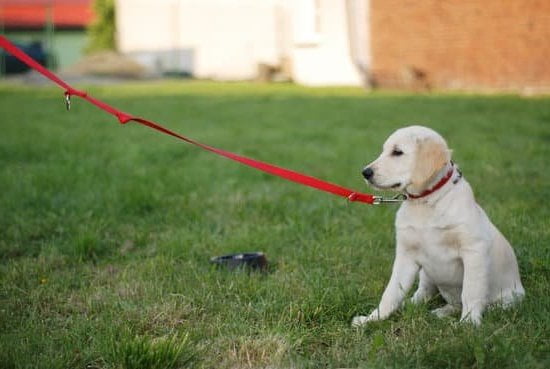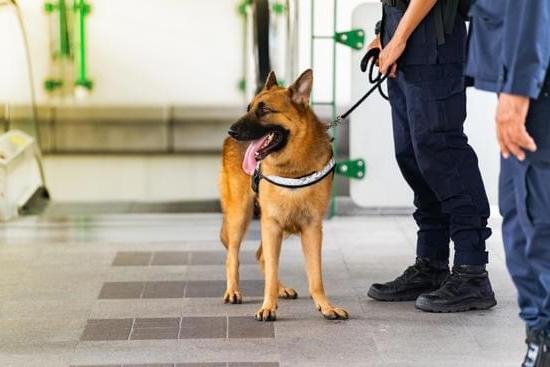?
There are a number of reasons why crate training might be a good option for your dog. Perhaps you need to train your dog to stay in one area while you’re away, or maybe you’re trying to housetrain your pup and want him to have a designated spot to go to the bathroom. Crate training can also be a valuable tool for puppies who are still learning to be housebroken – a confined space makes it easier for them to understand where they should and should not go.
There are a few things to keep in mind before you start crate training your dog. First, make sure that the crate is big enough for your dog to stand up, turn around, and lie down in comfortably. If your dog is still a puppy, you may need to buy a crate that will grow with him. Secondly, make sure that the crate is placed in a quiet, comfortable spot in your home. You don’t want your dog to feel like he’s been relegated to the dog house!
The best way to crate train your dog is to start slowly. Introduce him to the crate gradually, and make sure that he’s comfortable inside before closing the door. You can put a few treats or his favorite toy inside to make the crate more inviting. Once your dog is comfortable going into the crate, start to close the door for short periods of time. Gradually increase the amount of time that your dog spends in the crate.
It’s important to make sure that your dog always has access to water and that the crate is in a cool, comfortable spot. If your dog starts to whine or bark in the crate, don’t let him out until he’s quiet. This may take some time, but eventually your dog will learn that the crate is a safe, comfortable place to be.
Do You Need To Crate Train Your Dog
?
There is a lot of debate on whether or not crate training is necessary, and the answer to that question really depends on the individual dog. Some dogs absolutely love their crates and will happily go in to them whenever they are asked, while others may take a little more time to get used to the idea. Regardless of whether or not crate training is necessary, it can be a very beneficial tool for both dog and owner.
The main purpose of crate training is to provide a place for your dog to feel safe and secure. Dogs are den animals, and their crates serve as a natural den for them. This can be especially helpful for puppies who are still learning to potty train. The crate can be a place where they can go to avoid having an accident in the house, and can help to speed up the potty training process.
Another benefit of crate training is that it can help to reduce or eliminate destructive behaviors. Dogs who are left alone in the house often resort to chewing on furniture or other items in order to pass the time. When they have their own designated space where they are allowed to chew, it can help to reduce the amount of destruction they do when left alone.
The key to successful crate training is to make sure that your dog sees the crate as a positive place. You should never use the crate as a way to punish your dog, and should only put them in the crate when you are able to supervise them. Start by putting your dog in the crate for short periods of time and gradually increase the amount of time they spend in there. Make sure to offer plenty of positive reinforcement when your dog does something good, such as going in to the crate on their own or chewing on a toy instead of your furniture.
Dog Crate For Puppy Training
When you are house training a new puppy, one of the most important things you can do is to create a designated space for the pup to sleep and “go” in. A dog crate is an ideal solution for this, as it provides your pet with a confined area that is both comfortable and safe.
The best time to start using a crate is when the puppy is very young – ideally, as soon as you bring him or her home. This will help the puppy to get used to the crate and to feel safe inside it. When you are not able to watch the puppy, put him or her in the crate to prevent accidents indoors.
As the puppy gets older, you can start using the crate for training purposes. For example, you can use it to housebreak the pup or to teach him or her to stay calm when you are not around. The crate can also be a place for the puppy to relax and take a nap.
There are a few things to keep in mind when using a dog crate. Be sure to never use the crate as a punishment, and make sure that the puppy has plenty of water and toys to keep him or her occupied. When you are not using the crate, leave the door open so that the puppy can come and go as he or she pleases.
Benefits Of Dog Crate Training
There are many benefits to dog crate training. When done properly, crate training can help your dog learn to control his bladder and bowels, minimize destructive behavior, and can even help with obedience training.
The most important benefit of crate training is that it can help housetrain your dog. Dogs naturally do not want to soil their sleeping area, so by placing your dog in his crate when you are not able to supervise him, you can help him learn to control his bladder and bowels.
Another major benefit of crate training is that it can help reduce destructive behavior. Dogs that are left alone often resort to destructive behavior such as chewing on furniture or digging through the trash. By placing your dog in his crate when you are not able to supervise him, you can help to prevent him from engaging in these destructive activities.
Crate training can also be a helpful tool for obedience training. Dogs that are crate trained are often more willing to follow commands, as they know that doing so will result in them being placed back in their crate.
Overall, crate training can be a very beneficial tool for both you and your dog. When done properly, it can help to housetrain your dog, reduce destructive behavior, and can even be helpful for obedience training.
How To Crate Train Your Dog When You Work
When you work, you need to leave your dog at home. You can’t take your dog to work with you, and you can’t leave your dog at home alone all day. What can you do? Crate train your dog!
A crate is a great way to keep your dog safe and comfortable when you’re not at home. When you crate train your dog, you teach her that the crate is a safe place to be. Dogs usually love their crates, because they feel like a “den” – a place where they can feel safe and secure.
To crate train your dog, start by putting her in the crate for short periods of time. Gradually increase the amount of time she spends in the crate. Don’t leave your dog in the crate for too long, or she may start to feel uncomfortable or anxious.
Make sure your dog has plenty of water and toys to keep her occupied while she’s in the crate. You may also want to put a blanket or some other soft item in the crate to make her feel more comfortable.
If your dog starts to whine or bark when she’s in the crate, don’t give her attention. This will only reinforce the behavior. Ignore your dog until she stops whining or barking, and then let her out of the crate.
Crate training your dog can be a great way to keep her safe and comfortable when you’re not at home. It may take a little time and patience, but it’s worth it when your dog is happy and content in her crate.

Welcome to the blog! I am a professional dog trainer and have been working with dogs for many years. In this blog, I will be discussing various topics related to dog training, including tips, tricks, and advice. I hope you find this information helpful and informative. Thanks for reading!





